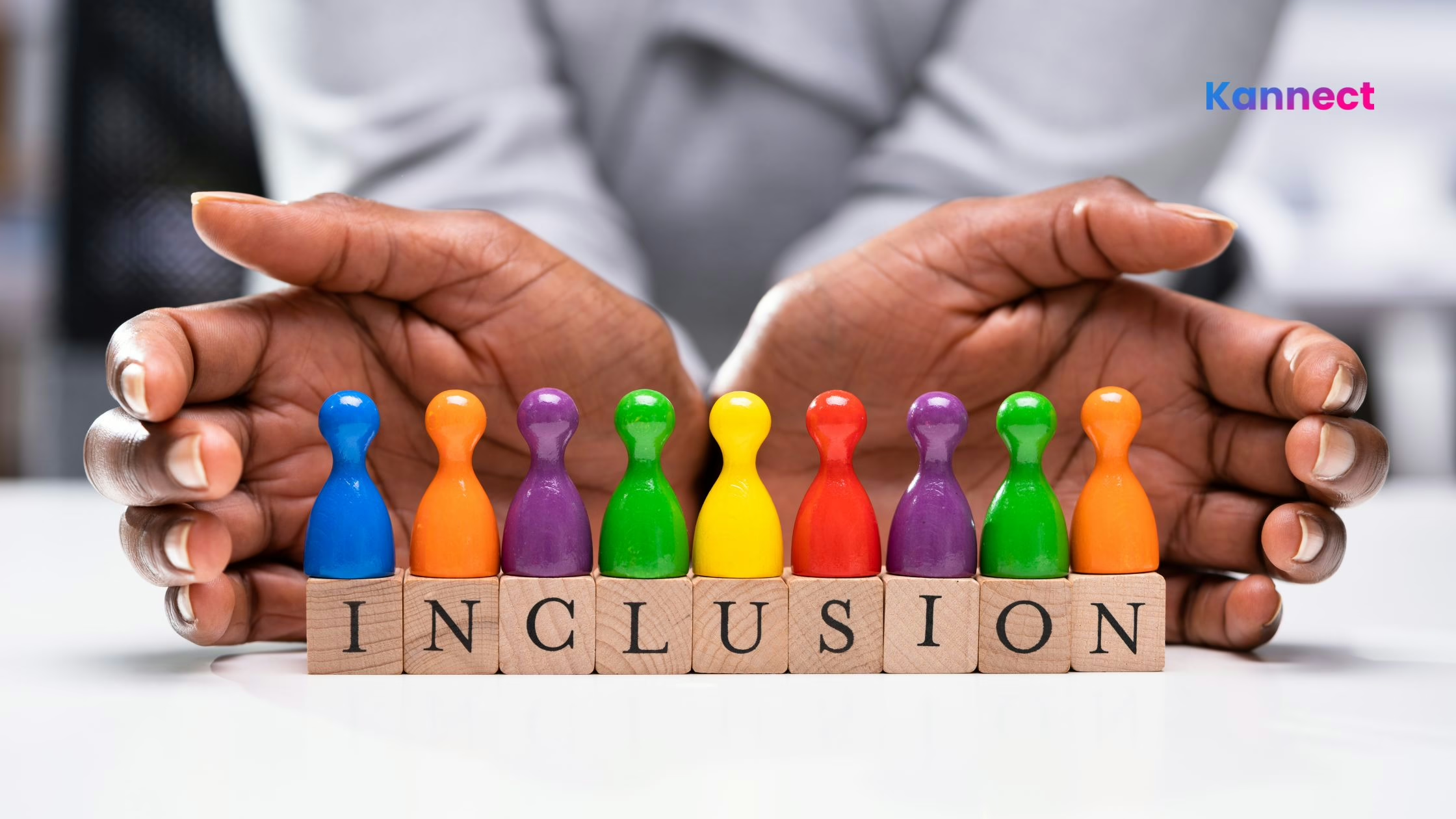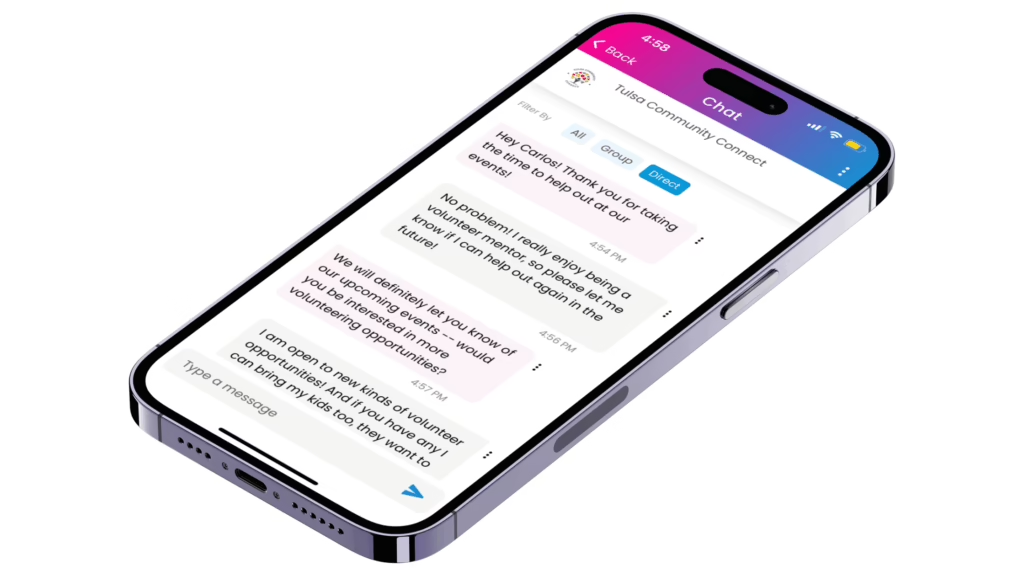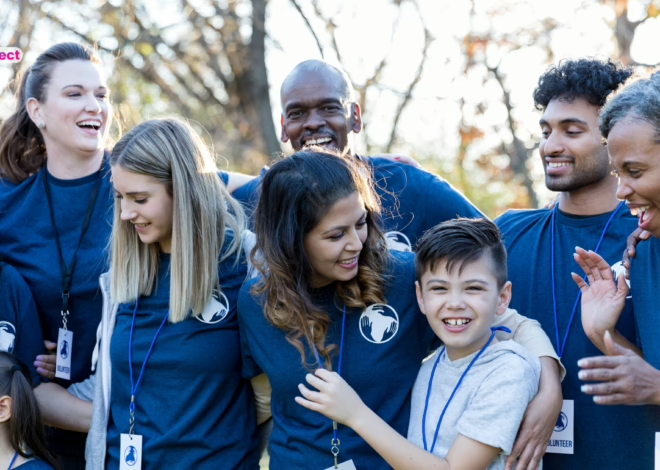
7 Powerful Reasons Why Inclusive Language Transforms Online Communities for the Better
Table of Contents
Why Language Shapes Your Community More Than You Think
Every message you send, whether it’s a warm welcome post, a quick poll, or an event announcement is a signal. It tells your community who belongs, who’s included, and sometimes who’s not. That’s the silent power of language.
In online spaces, where tone can easily get lost and nuance takes effort, inclusive language becomes your clearest tool for connection. It shows that your community values empathy, awareness, and the richness of diverse identities. It’s not just about avoiding mistakes or being “politically correct”, it’s about being intentionally kind and genuinely welcoming.
Think about it: Would you return to a space that casually excludes your experience? Probably not. Communities grow when people feel safe enough to show up fully. And that starts with the words we use.
Why It’s Never Too Early to Start Practicing Inclusive Language
You don’t need to be a linguist, activist, or policy expert to use inclusive language. You just need to be curious, intentional, and willing to grow. That’s it.
And if you’re building your community on a platform like Kannect, you’re already ahead of the curve. With Communication Management tools like targeted messaging, chat, and announcements, you have the perfect space to practice better habits like using gender-neutral greetings, respecting pronouns, and avoiding ableist or exclusionary terms.
The sooner you start using inclusive language, the more naturally it becomes part of your community’s culture. Because when everyone feels seen, they’re more likely to engage, contribute, and stay.
1. Language as a Welcoming Gesture
Language is more than words, it’s your welcome mat.
The way you greet someone can either open a door or quietly close it. In community spaces, especially digital ones where tone can get lost in translation, your choice of words isn’t just communication; it’s culture. Leading with inclusive language is foundational to building trust, connection, and genuine participation from day one.
The Power of Small Shifts
Consider the small, seemingly harmless phrases like “Hey guys” or “Ladies and gents.” While they might feel casual or traditional, they can unintentionally alienate members who don’t identify with those terms. Replacing them with inclusive language like “Hey everyone,” “Hi folks,” or “Welcome, team!” makes your community instantly more approachable and respectful to a broader spectrum of identities.
Building Engagement Through Belonging
This matters immensely in online communities, where inclusive language can become a beacon, one that affirms each person’s presence and dignity. Whether your members are neurodivergent, from different age groups, or simply navigating their own unique paths, the words you use can help them feel like they truly belong.
When people feel like they belong, they engage. They post. They comment. They contribute ideas. They bring their whole selves into the space. In other words, inclusive language isn’t just about being politically correct, it’s a powerful strategy for boosting meaningful member engagement.
💡 With Kannect’s Communication Management tools, you can customize your outreach using announcements, messages, and personalized tags. Start by reviewing your welcome messages and event invites, then rewrite them using inclusive language. Test what resonates best with your members using built-in Analytics, and watch how even the smallest linguistic shifts lead to stronger, more consistent member engagement.

2. It Reflects the Diversity of Your Actual Members
Recognizing Diversity in Communication
Your members are individuals, not a monolith.
The beauty of any online community lies in the richness of its members’ experiences, backgrounds, and identities. A community isn’t a one-size-fits-all model, so why should your communication be? Every member brings something unique to the table, whether it’s their cultural heritage, gender identity, age, or abilities. Using inclusive language ensures these differences aren’t overlooked but celebrated.
Incorporating inclusive terminology in your community’s interactions isn’t just about avoiding offense, it’s about actively reflecting the diverse identities of your members. Phrases like “Let’s all jump on the bandwagon!” might not consider the varying physical abilities within your group. A more inclusive alternative, such as “Let’s all join the movement,” makes everyone feel more seen and valued.
Small Changes, Big Impact
Language is a mirror to the diversity within your community.
Language has the power to shape perceptions and set the tone for how members feel about themselves within your community. One powerful way to be more inclusive is by adjusting phrases that may carry unintended biases or assumptions. A simple tweak, such as replacing “crazy idea” with “unexpected idea,” can eliminate casual ableism, ensuring that everyone feels respected and welcomed.
In fact, even subtle changes can show your commitment to acknowledging diverse experiences. For example, instead of using “he” or “she” as a default, opt for “they” when you’re uncertain about someone’s gender identity, or better yet, ask members how they prefer to be addressed. This simple act of using inclusive language builds trust and helps to create a safer environment for everyone.
Communicating with Care on Kannect
The platform you use matters.
On a platform like Kannect, where communication tools like event invitations, campaign messages, and targeted messages are integral to building a strong sense of belonging, the language you use can deeply impact your community’s dynamic. As you send announcements or targeted messages, adopting inclusive language in your outreach ensures that each member feels respected, valued, and connected to the broader community.
Whether you’re promoting an event, starting a discussion, or sending a community update, the language you choose becomes a part of how members experience your space. By incorporating inclusive language in these interactions, you create an environment where people can engage with confidence, knowing their identities and experiences are acknowledged.
💡 With Kannect’s Communication Management tools, you can tailor your messaging to reflect the true diversity of your members. Use targeted messages to ensure each person feels seen, and utilize your community’s feedback (through polls and surveys) to fine-tune your language even further. This ongoing commitment to inclusive language enhances member engagement and fosters long-term loyalty.
3. It Strengthens Trust and Encourages Open Sharing
Psychological Safety Fosters Genuine Engagement
Trust is the foundation of any strong community.
For any community to thrive, it must first establish a sense of psychological safety, a space where individuals feel comfortable and confident enough to show up as their true selves. One of the most effective ways to build this kind of environment is by using inclusive language. When members see themselves reflected in your words, they feel seen, heard, and valued.
Inclusive language sends the message that everyone is welcome to contribute without fear of judgment or exclusion. Simple changes such as using gender-neutral terms or avoiding stereotypes can create a much safer space for open participation. This feeling of safety encourages members to engage more deeply, share their thoughts freely, and contribute to conversations with ease.
Words Create Space for Connection
A community that listens is a community that grows.
When members feel heard, they open up. Using inclusive language is one of the first steps in signaling that you’re listening, and that your community genuinely cares about the diverse voices within it. Language is powerful in that it can make people feel both included or excluded, accepted or rejected.
In an online community, members might hesitate to share their ideas if they feel the language used doesn’t reflect their identity. By carefully selecting inclusive words, you create an environment where people feel encouraged to share their thoughts, challenges, and experiences without the fear of being misunderstood or marginalized. That’s how genuine connections are made.
Building Trust Through Communication on Kannect
Kannect helps you put trust at the center of your community.
On a platform like Kannect, where communication tools like chats, announcements, and messages are key to fostering community, adopting inclusive language becomes even more essential. Whether you’re welcoming new members or initiating a group discussion, the way you communicate shapes how members feel about being part of your space.
By choosing inclusive, bias-free language for your chats and announcements, you signal that you are creating a space where members can engage openly and comfortably. This builds trust and encourages long-term participation, which in turn strengthens the overall connection among members.
When members trust that they can express themselves freely without fear of bias or judgment, they are more likely to stay engaged, contribute, and feel a sense of belonging. This is the foundation of sustained member engagement, and it’s something Kannect helps you nurture through its communication management features.
💡 With Kannect’s Communication Management tools, you can easily foster a space where open sharing is encouraged. Use targeted messages and chat features to create spaces for authentic conversations, and always ensure that the language you’re using is inclusive and welcoming. This approach not only builds trust but also strengthens member engagement across your community.

4. It Prevents Harm Before It Happens
Words Have Power, Use Them Wisely
Language can uplift or unintentionally harm.
Even in well-meaning communities, words can be misinterpreted or carry unintended baggage. Using inclusive language isn’t just a matter of sounding polite or politically correct, it’s about actively preventing harm. When communities adopt exclusive language, even inadvertently, they risk alienating people who might otherwise be interested in participating.
For example, phrases that rely on outdated stereotypes, such as “man up” may seem casual, but they can reinforce harmful assumptions and hurtful attitudes. Instead, by choosing inclusive words, you show that your community is one where all members are respected and treated with care.
Microaggressions Are Real And Preventable
Inclusive language helps avoid accidental harm.
Microaggressions – small, seemingly insignificant comments or actions that have a harmful impact on marginalized groups, are often caused by the use of non-inclusive language. These comments can be harmful, even if they weren’t intended that way.
For example, using gendered terms like “he” or “she” without knowing someone’s gender can be an inadvertent microaggression. However, adopting inclusive language such as using “they” as a default or referring to people by their names can help avoid these issues altogether. By being mindful of your language, you create a space where all individuals feel respected and valued, preventing harm before it happens.
The Power of Reflection on Kannect
Kannect gives you the tools to fine-tune your communication.
On platforms like Kannect, you have the luxury of time and space to reflect on your messaging. The tools provided by Kannect allow you to schedule, preview, and refine your content before sending it to your community. This means you can take a moment to ensure that your words are inclusive, thoughtful, and considerate.
By pausing to review your content before sharing it, whether it’s an event invitation, an announcement, or a campaign message, you can easily spot potential issues in the language that could unintentionally harm or alienate certain members. With this extra care, you’re creating a safer, more inclusive environment for all.
Creating a Safe Space Through Careful Language
A little extra thought can go a long way.
The impact of inclusive language is far-reaching. It doesn’t just prevent harm; it actively shapes the atmosphere of your community. By choosing words that are welcoming and respectful, you ensure that everyone feels safe, valued, and included. This helps build a community where people are excited to engage, share, and connect.
With Kannect’s communication management tools, you have the ability to create a space that encourages thoughtful, inclusive language at every turn. From carefully crafted announcements to interactive chat features, the platform makes it easy for you to foster a safe environment where members can thrive without fear of discrimination or harm.
💡 Take advantage of Kannect’s scheduling and preview features to review your messages and ensure that the language you’re using reflects your commitment to inclusivity. A moment of reflection can be the difference between a message that builds bridges and one that unintentionally isolates people.
5. It Fosters More Meaningful Engagement
Inclusive Language Sparks Authentic Conversations
Language invites participation, choose it wisely.
The way you communicate can make all the difference in whether or not people engage with your community. When you use inclusive language, you create an environment where people feel comfortable sharing their thoughts, ideas, and experiences. It’s simple – when language is respectful and accessible, members are more likely to engage in deeper, more meaningful conversations.
Consider how the tone and inclusivity of a survey prompt or event invitation can affect response rates. A survey that avoids jargon and is framed with inclusive language invites a more diverse range of responses. Similarly, when you send out event invites that acknowledge various genders, cultures, and experiences, you’re more likely to see higher attendance. This isn’t just about using the “right” words, it’s about showing your community that their voices are welcome.
Creating a Welcoming Space Leads to More Engagement
People are more likely to participate when they feel seen.
When your language is inclusive, it opens the door for everyone to participate. Inclusive language signals that your community is a space where all members, regardless of their identity or background, are welcome and valued. It removes barriers that might otherwise prevent people from getting involved.
For example, using gender-neutral language like “everyone” or “folks” rather than gendered terms like “guys” makes people feel like they truly belong. This, in turn, encourages more engagement, whether it’s in online discussions, event participation, or providing feedback in surveys. The more inclusive you are with your language, the more people will feel comfortable showing up and contributing in their own unique ways.
Data-Driven Insights Through Kannect
Track engagement and refine your approach with precision.
Platforms like Kannect offer features such as Communication Management, Event Management, and Analytics that let you dive deep into how people are responding to your content. By using inclusive language, you can track whether more diverse groups of members are responding, attending events, or completing surveys.
💡 Kannect’s Analytics and Reporting tools allow you to assess exactly how your language affects engagement. Are your members more responsive to event invites that use inclusive language? Are they more likely to engage in polls or surveys that are worded in a way that feels accessible to everyone? These insights give you valuable data on how to refine your communication for maximum impact. When you make intentional, inclusive language choices, you see the payoff in increased engagement.
Inclusive Language Drives Results
Simple language choices lead to greater participation.
The choice of language you use shapes how people feel about interacting with your community. Inclusive language not only fosters a sense of belonging, it also leads to higher engagement levels. Whether it’s a member filling out a survey or showing up for an event, they are more likely to engage when they feel like their voice matters.
By using inclusive language, you’re actively cultivating a community that invites participation, shares diverse perspectives, and, most importantly, fosters an environment where people feel their contributions are valued. In the long run, this deeper engagement helps create stronger, more meaningful connections among your members.
6. It Reflects Your Values Loud and Clear
Language is a Reflection of Your Community’s Core Values
The words you use are a direct reflection of your community’s ethos.
When you choose to use inclusive language, you’re not just making a polite gesture, you’re actively reinforcing the values of your community. Every word is an opportunity to show what your community stands for, and that should always be respect, inclusivity, and awareness. Whether it’s in member communications, event promotions, or internal messages, language is a powerful tool that demonstrates your commitment to creating a welcoming, diverse space.
If your community celebrates respect and belonging, your language should reflect that. By consistently using inclusive language, you signal to your members that these values are not just aspirational, they’re real and embedded into the fabric of the space. This sets the tone for every interaction and shows that your community isn’t just paying lip service to inclusivity, it’s living it every day.
Consistency Builds Trust
A unified message strengthens the community’s bond.
On platforms like Kannect, where communication is key to fostering connections, consistency in messaging is essential. The language you use to interact with your members should align with your core values. When you communicate inclusively, you reinforce the idea that everyone is welcome, respected, and valued, no matter their background, identity, or experience.
Consistency is key. When your messages, whether they’re event invitations, surveys, or task updates—are framed with inclusive language, it builds trust. Members know what to expect and feel assured that the space they are engaging with is a true reflection of the values you stand for. Whether you’re communicating through targeted messages, announcements, or other tools on Kannect, inclusive language helps you maintain that consistency.
Walk the Talk with Kannect
Live your values through every communication.
💡 Consistency is even easier to maintain with tools like Kannect’s Campaign Management, Event Management, and Task Management. These features allow you to keep your messaging on point, ensuring that every piece of content you share is aligned with the values of respect and inclusivity.
By using inclusive language across your communication tools, you not only reinforce your community’s values but also make it clear that inclusivity is not just a checkbox, it’s a priority. And when you walk the talk, your members will notice and feel encouraged to follow suit, furthering the culture of belonging.
7. It Future-Proofs Your Community Culture
Evolving Language for an Evolving Community
Staying relevant means embracing change.
Language isn’t static, it’s constantly evolving to reflect the diverse world around us. By using inclusive language, you ensure your community is growing alongside these changes, staying relevant to both new and existing members. Communities that fail to adapt to more inclusive language risk becoming disconnected from the very people they wish to serve. But when you stay on top of language shifts, you show your members that you are committed to learning, unlearning, and moving forward together.
Being mindful of language doesn’t just reflect your community’s present, it sets a positive tone for its future. It signals that your space is inclusive, respectful, and forward-thinking, ready to embrace new ideas and perspectives. As your community changes, so should the way you communicate.
Growing Together with Inclusive Language
Fostering a culture of learning and adaptability.
Incorporating inclusive language into your community’s daily communication ensures that you’re not stuck in outdated norms. It shows that your community’s values are evolving in response to the ever-changing landscape of identities, experiences, and needs. This isn’t just about using trendy words, it’s about staying in tune with your members and showing that you are constantly learning, adapting, and improving.
On platforms like Kannect, you can easily integrate updated language into your community’s culture. Whether it’s a new initiative, event, or campaign, using language that’s reflective of current values sets your space apart as a safe and forward-thinking environment. Through real-time feedback and consistent communication, you can keep track of how your language is being received and adjust it accordingly, ensuring your community culture remains inclusive and future-proof.
Stay Agile with Real-Time Feedback
Tools that adapt as quickly as language changes.
💡 With Kannect’s Campaign Management and Member Management tools, you have the flexibility to quickly roll out updated language, onboard new members with language that reflects your values, and make real-time changes based on feedback. This ability to pivot ensures your community culture remains dynamic, inclusive, and sustainable over time.
By leveraging inclusive language in every aspect of your communication, you help create a space that encourages openness, growth, and evolution. Your members will feel heard, seen, and supported as your community continues to adapt to their needs, making it a place where everyone belongs, now and in the future.
Wrapping Up: Words Create Worlds
In communities, every word matters. Inclusive language isn’t just about political correctness, it’s about creating a culture where every member feels seen, valued, and safe enough to participate fully. It builds trust. It reflects shared values. It ensures your space grows with and not apart from your members.
Platforms like Kannect don’t just help you communicate, they help you connect. With the right tools and the right words, you can shape a future where your community thrives through belonging, understanding, and respect.
Because inclusive communities aren’t built by chance. They’re built by choice.
🎁 Grab Your Free Copy of The Inclusive Messaging Tips Sheet
Say what you mean and make everyone feel seen. This quick, downloadable guide gives you smart swaps and easy wins to make your messaging more welcoming from the first word.
👉 Download The Inclusive Messaging Tips Sheet → Here!
🎯 Words Matter. So Does Your Next Move.
✅ Follow us on LinkedIn for ideas that include.
💡 Subscribe to the Community Engagement Playbook – your weekly guide for strategies that connect.
➡ Subscribe to our Blog for more insights that help you lead with empathy, clarity, and connection.
Let’s build a space where everyone feels seen!
Try Kannect today

Proudly powered by WordPress
What is inclusive language and why does it matter in online communities?
Inclusive language refers to communication that is free from bias, stereotypes, or discriminatory expressions. In online communities, it helps foster respect, build trust, and ensure all members feel safe and included, regardless of their background or identity.
How can I start implementing inclusive language in my community today?
Begin by reviewing common phrases used in announcements, messages, and event descriptions. Replace gendered or ableist terms with neutral, inclusive alternatives. Tools like Kannect make this easy by allowing you to edit and preview communication before it goes live.
How does Kannect support the use of inclusive language?
Kannect’s robust Communication Management, Campaign tools, and Member Management features allow you to craft, schedule, and distribute messages that reflect your values. Its real-time feedback and analytics also help you track how your messaging is received, so you can refine as you grow.
Can inclusive language improve member participation and engagement?
Absolutely. When members see themselves represented and respected in the language you use, they’re more likely to engage in events, give feedback, and contribute meaningfully. Inclusive language builds the psychological safety that drives stronger engagement.
Is inclusive language just about gender-neutral terms?
Not at all. While gender neutrality is one aspect, inclusive language also includes being mindful of cultural differences, accessibility, neurodiversity, and socioeconomic factors. It’s about using words that welcome all, without assuming identity or experience.
How can I encourage my team or moderators to use inclusive language consistently on Kannect?
Use Kannect’s Task Management feature to create training assignments or guidelines. You can also create internal campaigns or share resources through targeted messages. Building a shared language starts with shared learning.



